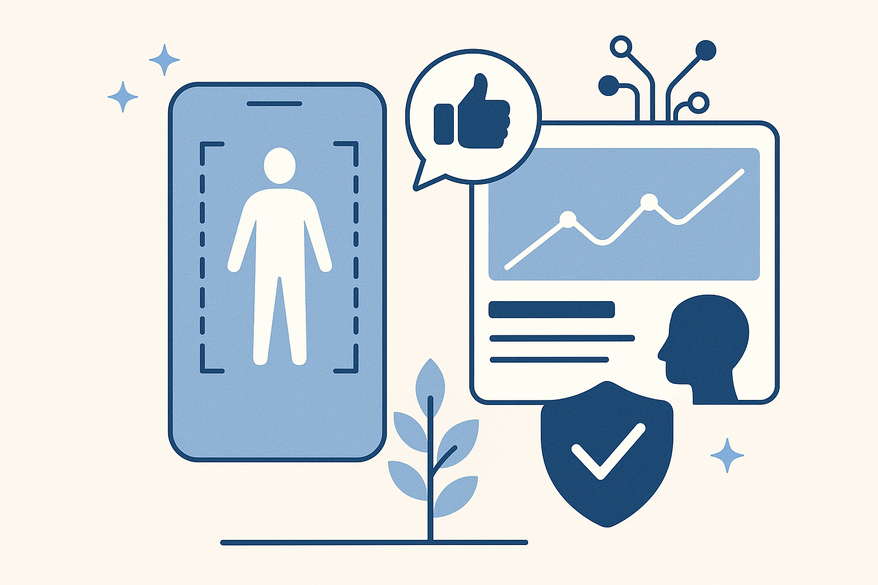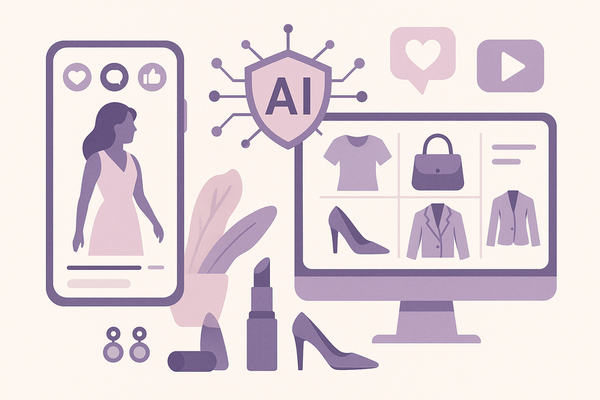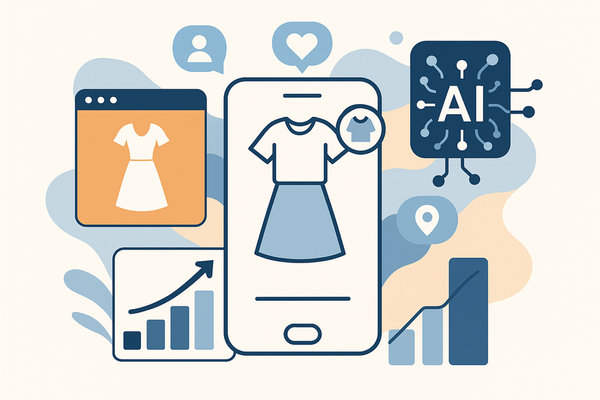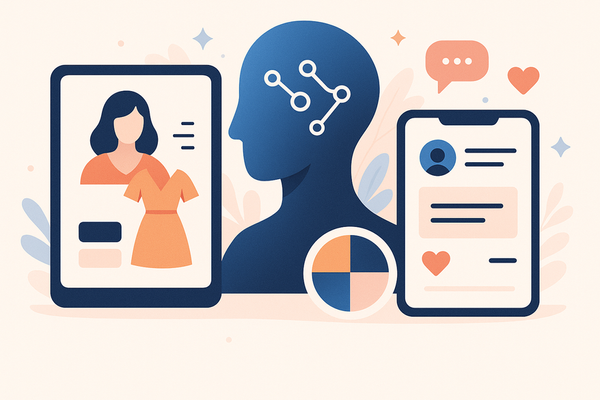How a Body Language Improvement App Transforms Your Communication
Discover how a body language improvement app enhances non-verbal communication skills with AI feedback and analytics, boosting confidence and building trust.

Estimated reading time: 8 minutes
Key Takeaways
- Real-time AI feedback accelerates non-verbal skill acquisition by flagging posture, gestures, and eye contact issues.
- Video analysis and AI-driven analytics personalize insights to target recurring body language patterns.
- Coaching modules offer tailored exercises for posture, gesture variety, and facial expressiveness.
- Proven benefits: users report higher confidence, stronger trust, and more persuasive interactions.
Table of Contents
- Understanding the Concept of Non-Verbal Communication
- Key Features of a Body Language Improvement App
- Benefits and Real-World Use Cases
- How It Works Under the Hood
- Criteria for Choosing the Right App
- Future Trends and Innovations
- Conclusion
- FAQ
Understanding the Concept of Non-Verbal Communication with a Body Language Improvement App
Non-verbal communication—often called body language—includes facial expressions, gestures, posture, and eye contact. These unspoken signals can reveal emotions and intentions, sometimes conveying more than spoken words. A body language improvement app helps decode and refine these cues for more authentic connection.
Common challenges in mastering body language:
- Lack of self-awareness about personal habits and tics
- Cultural differences in interpreting gestures and expressions
- Difficulty breaking ingrained posture or movement patterns
Real-World Example: In a remote sales pitch, a salesperson kept looking down at notes, undermining authority. A quick posture check from an app corrected the habit in real time, boosting client confidence.
Research shows non-verbal cues often communicate more than words, revealing hidden emotions and intentions. See the PMC9325107 study for details.
Key Features of a Body Language Improvement App
A top-tier body language improvement app offers a suite of tools that turn self-awareness into actionable progress.
- Real-Time Feedback
- AI analyzes live camera input to flag slouching, fidgeting, or lack of eye contact.
- Instant alerts and corrective suggestions accelerate learning.
- Research: real-time feedback accelerates skill acquisition by up to 40%. See the AI-powered training study.
- Video Recording Analysis
- Record practice sessions or real meetings.
- App timestamps key moments for side-by-side comparison.
- Users replay gestures and expressions to self-correct.
- AI-Driven Analytics
- Tracks performance trends over days, weeks, or months.
- Highlights recurring patterns—like overuse of certain gestures.
- Generates personalized insights for targeted improvement.
- Research: advanced analytics boost self-awareness and retention. See the PMC9325107 study.
- Personalized Coaching Modules
- Tailored exercises based on initial posture and gesture assessment.
- Drills for spinal alignment, hand movement variety, and facial expressiveness.
- Example Functionalities
- Posture Assessment: evaluates alignment and suggests corrective stretches.
- Gesture Tracking: monitors hand movement symmetry and pacing.
- Facial Expression Analysis: detects mismatches between intended message and actual expression.
- Research: facial analysis pinpoints emotion-word incongruence. See the PMC9325107 study.
Benefits and Real-World Use Cases of a Body Language Improvement App
Using a body language improvement app can transform both personal and professional interactions.
Benefits:
- Enhanced Communication Skills—more persuasive and empathetic interactions with Matterapp.
- Boosted Confidence—positive self-perception from consistent improvements via boost-confidence methods.
- Strengthened Relationships—clear non-verbal signals foster trust and rapport.
Real-World Use Cases:
- Job Interviews: project confidence with upright posture and steady eye contact; one user saw a 30% increase in callbacks. See the AI-powered training study.
- Business Presentations: engage audiences with purposeful gestures and expressive facial cues; sales teams saw 25% higher retention.
- Social Interactions: read and respond to subtle non-verbal signals across cultures; expatriates build rapport faster.
“After using the app for a month, I increased my audience engagement by 30%. The instant posture alerts saved me from slouching during virtual pitches.” – User X
How a Body Language Improvement App Works Under the Hood
Understanding the technology behind these apps helps build trust and highlights their sophistication.
Motion Detection & Computer Vision
- Camera captures skeletal points and facial landmarks for precise movement tracking.
- Computer vision maps joints and expressions in real time.
Artificial Intelligence & Machine Learning
- Models trained on large, diverse datasets classify gestures and detect anomalies.
- AI tailors feedback to individual progress patterns, adapting suggestions over time.
- Research: AI-driven feedback is twice as effective for sustained improvement. See the AI-powered training study.
Interactive Simulation Scenarios
- Virtual role-plays with branching dialogues replicate real-life conversations.
- Safe practice environment allows repeated trials without judgment.
Step-by-Step User Journey
- Download app and grant camera access.
- Complete an initial assessment of posture, gestures, and expressions.
- Receive a personalized training plan with daily drills.
- Engage in practice sessions with live feedback and recorded playback.
- Monitor progress on a dashboard showing metrics like eye-contact time.
- Submit feedback to refine future recommendations.
Criteria for Choosing the Right Body Language Improvement App
- User Interface & Ease of Use
- Look for intuitive workflows, clear prompts, and accessibility features.
- Tip: choose apps with large buttons and simple navigation for quick daily use.
- See the design mockups for inspiration.
- Accuracy & Reliability
- Ensure AI models are validated on diverse datasets to minimize bias.
- Check if the app provides details on its training data and validation studies.
- Pricing & Trial Options
- Compare free vs. premium features, refund policies, and upgrade paths.
- Tip: start with a free trial to assess real-time feedback accuracy.
- Support & Community Features
- In-app coaching: live or chat-based guidance from experts.
- User forums and resource libraries for peer support.
Future Trends and Innovations for a Body Language Improvement App
- Augmented Reality (AR) Overlays
- AR glasses or mobile overlays display posture guides in real time.
- Use-case: public speakers receive live cues on gesture size and eye-contact distribution.
- Deeper AI Context-Awareness
- Algorithms adapt feedback to specific industries and cultural norms.
- Example: a sales professional in Japan receives guidance on bow depth and nod frequency.
- Wearable Device Integration
- Sensors in clothing measure subtle shifts in posture or tension.
- Continuous monitoring offers out-of-app insights, like slouch alerts during a commute.
- Predictive Coaching
- AI anticipates user needs and suggests preemptive exercises before stressful meetings.
To track your posture and gesture improvements alongside other AI-powered appearance metrics, explore the insights available in Maxx Report.
Conclusion
A body language improvement app is a powerful ally for enhancing non-verbal communication. By leveraging AI-powered real-time feedback, video analysis, personalized coaching, and advanced analytics, these apps help users build confidence, foster trust, and excel in personal and professional settings. When choosing the right app, prioritize ease of use, feedback accuracy, and robust support. With AR overlays, deeper AI context-awareness, and wearable integration on the horizon, the future of non-verbal communication training is brighter than ever. Take the first step today: download an app and unlock stronger, more authentic connections in every conversation.
FAQ
- What is a body language improvement app? It’s a digital tool that analyzes and refines your non-verbal cues—posture, gestures, facial expressions, and eye contact—to enhance communication.
- How does real-time feedback work? The app’s AI uses your camera feed to detect posture or gesture issues and delivers instant visual or audio alerts for corrective action.
- Can this app really boost confidence? Yes. Consistent feedback and measurable progress help users feel more self-assured in meetings, presentations, and social interactions.
- Is my privacy protected when recording videos? Most apps encrypt stored videos and offer clear permissions. Always review the privacy policy to ensure your data remains secure.





